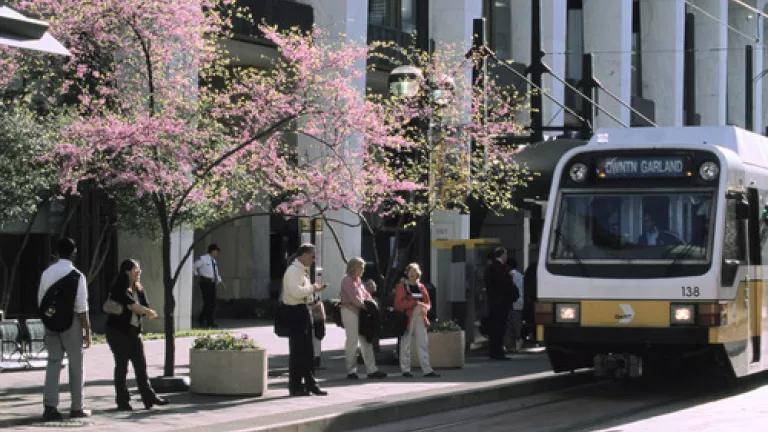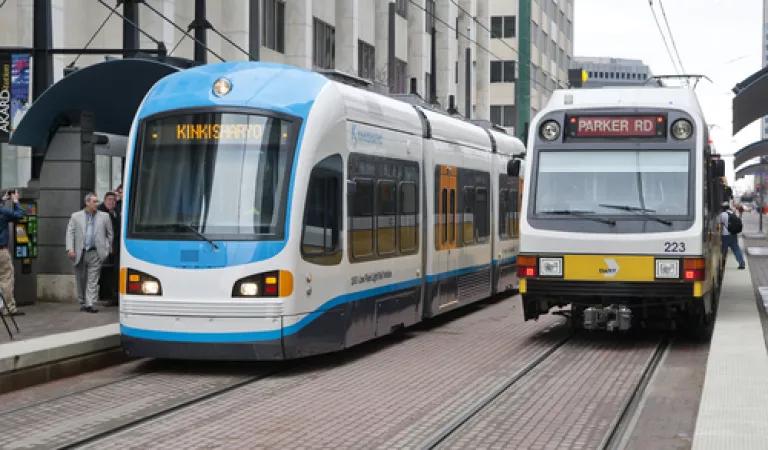
Back in 2001, the Union of Concerned Scientists did a report called Drilling in Detroit, which cleverly reframed the drilling issue by pointing out that we could recover more oil from building better cars than we could ever hope to get by drilling under our soil and sea. Ten years later, we actually are drilling in Detroit – fuel economy standards are on the rise for the first time since the 1970s, and the EPA and DOT are working to raise the bar even higher. So where do we “drill” next? Main Street.
Yes, there is plenty of oil to be found on Main Street, and it’s ours for the taking. Not with a drilling platform, but by creating oil-savings opportunities in our cities and suburbs. An aggressive expansion of transit in cities and suburbs, for example, could save us almost 4 million gallons of oil each day by 2030. And consumers would save billions of dollars on vehicle operating costs (we all know owning, maintaining, and especially fueling up our cars isn't free).
Let’s look at one drilling bit on our toolkit -- light rail and streetcars. Trolleys used to criss-cross our cities, and these sleeker, modern-day equivalents are being built now. Their spread is one of the more promising U.S. transportation trends. Railcars on these systems run on street level and are powered by overhead electricity – and in a nod to tradition, some of them still use a bell-like ‘ding-ding” sound, if not an actual bell, to signal a departure. Mid-sized and larger cities in just about every region of the country have built light rail systems, including places you might not expect, like Dallas, Charlotte, and Salt Lake City.
The blue car pictured below is a new, energy-efficient car being tested by DART Rail, the light rail system serving the Dallas area (both photos in this entry are courtesy of DART). This prototype can run on overhead electrical lines as well go five miles on a rechargeable battery. It also uses regenerative braking technology, which conserves power by channeling braking energy back to the battery.

DART Rail has become the poster child of light rail, mostly because of its unexpected success in the heart of Texas’ big-car culture. (Even J.R. Ewing might be using light rail today.) The system launched in 1996 with 11 miles of track, and is now, at about 75 miles of track, the longest light rail system in the country, connecting Dallas to outlying towns such as Plano and Pleasant Grove. In 2010, DART Rail carried an average of 57,000 passengers a day.
Not only has the light rail helped residents save money on gas and move around the sprawling Dallas metro area, it has also raised real estate values, commercial occupancy rates and created thousands of jobs. A 2009 report estimated that the build-out of the system would generate more than $4 billion dollars in regional economic activity by 2014.
Who would have imagined that an oil-free public transportation system would become an economic engine in the heart of oil country? That’s why investing in transportation alternatives like light is so critical right now. They lift the economy, protect the environment, and keep people moving, even when gas prices are skyrocketing.
In the coming weeks, I’ll look at more ways we can “drill” on Main Street and improve our towns in ways that will help us shake off the burden of oil dependence.
